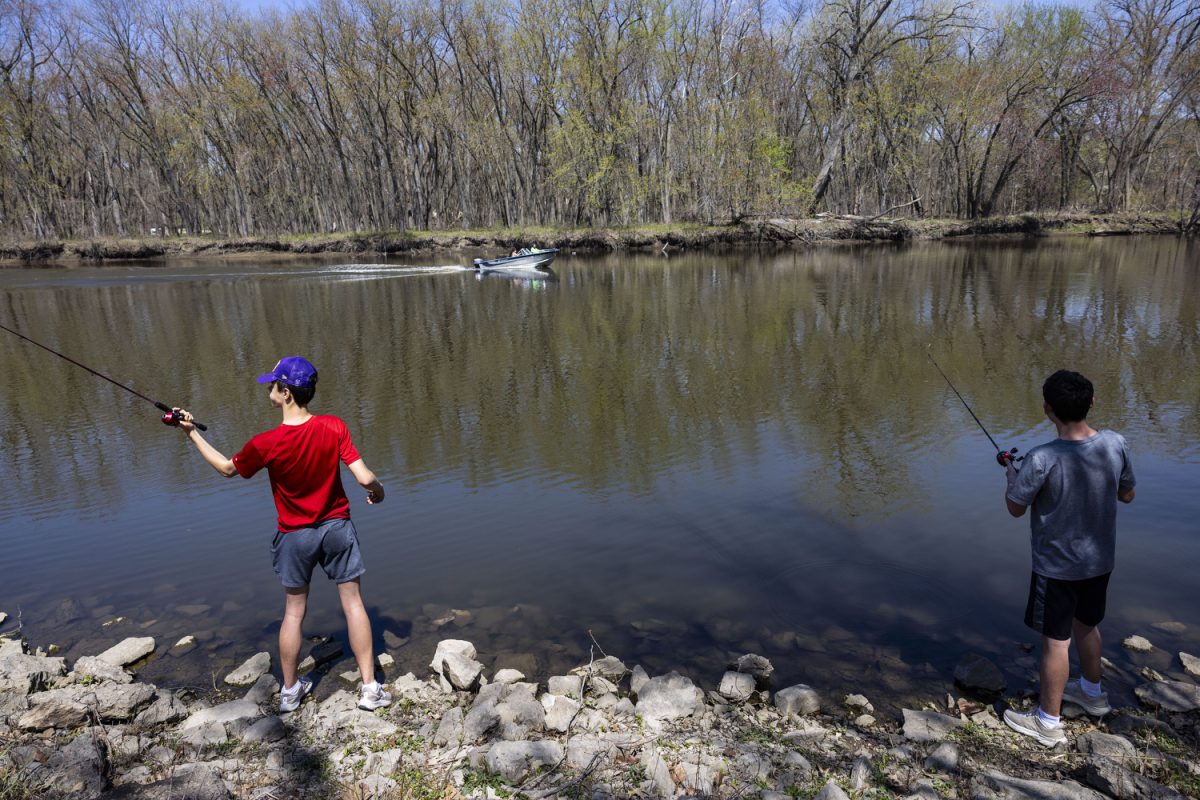As I cross the Burlington Street bridge, the aroma of fresh earth and lush greenery fills the air, blending with the sharpness of a late afternoon breeze. The Iowa River flows steadily beneath me, its surface gleaming like a sheet of glass touched by the sun.
I pause to take in the beautiful scene. Plants sway gently along the banks, their long, trailing branches dipping into the water, while a chorus of chirping birds supplies natural background music that is both soothing and energizing. The sun’s warmth on my skin contrasts with the chill of the river’s mist, which occasionally brushes my face as I lean over the railing, hooked by the sight of fish darting just beneath the surface.
As I continue my walk, I observe the concrete sidewalk that runs alongside the river, surrounded by wildflower patches. This calm landscape is nearly perfect, but it’s scented with a sense of unfulfilled potential.
I can’t help but think about how vibrant outdoor environments in towns like Madison, Wisconsin, and Austin, Texas, thrive near rivers. In Madison, the banks of Lake Mendota are alive with students kayaking, paddleboarding, and picnicking in parks that flank the lakefront. Meanwhile, Austin has an enormous network of pathways along Lady Bird Lake, where joggers and families can enjoy the fresh air and each other’s company.
These activities not only improve student life but also benefit local economies and promote community engagement. According to a study by the Journal of Urban Ecology, areas that invest in waterfront recreation see increases in property values and local business revenues.
In contrast, the Iowa River has been disregarded. While it’s a lovely resource, the infrastructure and programming required to encourage outdoor activities are minimal. The lack of recreational facilities like kayak rentals, picnic spots, and riverside walking trails detracts from what could otherwise be a lively outdoor scene for both students and residents.
Recent initiatives at the University of Iowa, like the Recreational Services: Action Plan, have focused on improving student well-being through recreational activities. However, the river remains a missed opportunity. As a result, students are often unaware of the ecological benefits the river provides or the activities they could engage in.
With a rising emphasis on mental health and wellness in educational settings, improving the Iowa River infrastructure could play a critical role in promoting outdoor activities for students. According to Kaplan’s Attention Restoration Theory, or ART, mental fatigue and concentration can be improved by time spent in, or looking at, nature, which enhances the brain’s capacity to focus on a specific stimulus or task.
By creating spaces for students to engage with the river, the UI could foster a culture of wellness and connection to nature. This could also align with broader sustainability initiatives on campus, as engaging with the river would deepen students’ understanding of environmental responsibility.
So, why hasn’t the UI or Iowa City invested in the development of the Iowa River? One cause could be a lack of understanding about the potential benefits. Local governments and educational institutions frequently prioritize money for other projects, prolonging a cycle of underinvestment in natural resources. However, a coordinated effort by the institution, local government, and community members could shift this narrative.
Developing the Iowa River would provide significant environmental benefits. Improving riparian zones can enhance water quality, boost biodiversity, and provide a home for local wildlife.
A healthy river environment helps everyone, from the kids who use it to the wildlife that lives in it. According to a report by the Environmental Protection Agency on “Prevention and Restoration of Hydrologically Altered Waters,” restoring natural waterways can lead to significant ecological improvements and increased community resilience against climate change.
The Iowa River is a severely underutilized resource with enormous potential for recreational and ecological improvement. By investing in this natural treasure, the UI and Iowa City can enhance student life, promote outdoor activities, and benefit the environment and local economy. As we move forward, we must acknowledge the value of our natural resources and seize the opportunities they provide for a healthier, more connected society.



